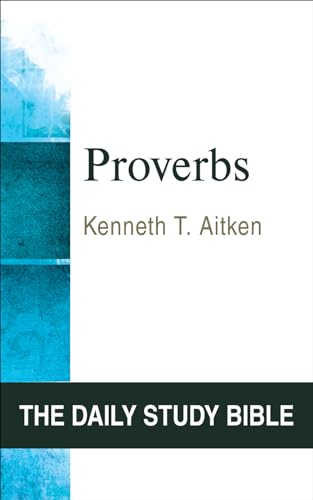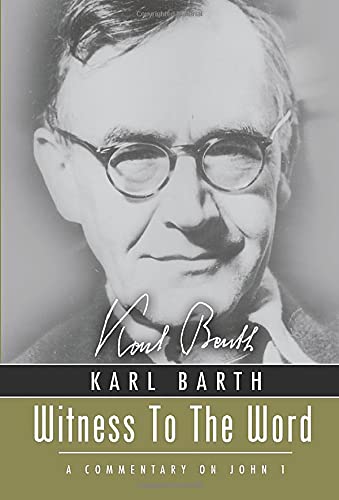Volume 13 - Issue 2
Evangelical commentaries on Isaiah
By Martin J. SelmanIt is a rare event and a great pleasure to be able to welcome not one but two new commentaries on the book of Isaiah, both by evangelical scholars. Both works are part of major commentary series, and most unusually for substantial twentieth-century commentaries on Isaiah, both are devoted to the whole book. At the moment, neither commentary is complete, so that one cannot judge whether either author has been fully successful in joining together what man has so often put asunder, but even for the first volumes, this holistic approach makes a significant difference to the interpretation. The point of division between the volumes is not of great import in either case, and Watts’ decision to begin vol. 2 with ch. 34 does not imply acceptance of Brownlee and Harrison’s theory concerning a bipartite structure. Comparisons between them will be inevitable, not least because for most students (and their teachers!) sharp conflict will arise between the allure of the bookshop and the alarm of the bank manager!
Despite their outward similarities, the two works are very different in both approach and method. This first major work by Oswalt, who lectures at Trinity, Deerfield, is the more traditional volume from an evangelical perspective, though one should not underestimate the considerable creativity and freshness in his work. In comparison with the useful, but now dated, contribution by E. J. Young, his predecessor in the NICOT series, it marks a notable advance. Oswalt’s literary style and discussion are refreshingly contemporary, and he manages to maintain a distinctive evangelical emphasis without resorting to polemics. Nor does he indulge Young’s preference for allowing the NT to determine exegetical issues in Isaiah, or confine himself to a strictly verse-by-verse approach.
Oswalt’s concern for the theology of Isaiah is particularly attractive, and all those interested in what the book of Isaiah actually says, as distinct from what it might originally have said, will find much help here. Preachers as well as students will be grateful. Two theological themes are seen as crucial, those of trust (the unifying theme of chs. 7–39), and of servanthood. Israel is called to servanthood, but fails until and unless she recognizes the work of the Messianic Servant. A balance is maintained between identifying the Servant of chs. 49–55 and the Messiah of chs. 9 and 11 on the one hand, and on the other of underlining the close association between Israel’s servanthood and that of the supreme individual Servant. Another striking feature, particularly in a scholarly work, is the attempt to work out the implications of Isaiah’s message for today’s world. Many commentary dust jackets arouse the reader’s expectations in this area, but few commentators even begin to justify their publisher’s blurb. The application, which focuses on philosophical and theological issues rather than ethical or political ones, is generally sensitively done. It is good to see an evangelical commentator taking seriously the fact that the OT is the Word of God for all generations and not just a piece of revealed history and/or literature. Oswalt’s work is eminently readable, though just occasionally one comes across phraseology that will be incomprehensible outside the North American continent (e.g. ‘bootless’). If one is going to quibble, one notices a lack of interaction with some recent work on Isaiah, notably with the massive commentary of Wildberger, and some of the more recent contributions in the debate about unity in Isaiah. Oswalt is also generally content to follow previous form-critical conclusions, particularly those of Westermann. Nevertheless, there is much here that is. stimulating as well as informative, and students of various theological persuasions will be grateful to Oswalt for what is a considerable achievement.
Watts’ contribution follows the regular format of the Word series, with each section of the commentary being divided into six sections, enabling the reader to concentrate on his own preferences. Although one appreciates the reasoning behind this approach, it does make for a more disjointed reading. But perhaps one cannot have it both ways! However, although the format may follow traditional lines, the content certainly does not do so. Watts, who has written commentaries on several of the prophetic books and who now teaches at the Southern Baptist Seminary in Louisville, describes Isaiah as a Vision. This word, based of course on the first word of the book’s Hebrew text, is understood as a literary term referring to the whole book. The Vision is interpreted as a literary drama divided into twelve acts (though the title page of the commentary proper confusingly has ten!), and within each section of text, individual speakers (such as heaven and earth, chorus, etc.) are identified. Each of these acts (also called generations) is delineated on the basis of historical references or associations. For example, the first act (chs. 1–6) concludes with the death of Uzziah (6:1), and the second (chs, 7–14) with the death of Ahaz at 14:28 (so disturbing the familiar grouping of oracles to the nations in chs. 13–23). Other acts, particularly after the mention of Cyrus in 44:28–45:1, are defined on the basis of increasingly slender evidence. The entire Vision is given a fifth-century perspective and dated around 435 bc, though it covers the whole period from the eighth to the fifth centuries, and is in ‘substantial conformity to the vision and the words of Isaiah of the eighth century’ (p. xxiv). This date is based on the latest historical setting in the book, the final downfall of Edom (63:1–6), which, since Edom does not appear in Ezra-Nehemiah, is thought to have occurred by the mid fifth century.
It is quite impossible within the short compass of this review to discuss adequately the distinctive features of Watts’ work. There is undoubtedly much here that is not only stimulating, particularly in terms of Watts’ attempt to understand the book as a whole, and in his emphasis on the book as essentially divine revelation. Some criticisms, however, must be voiced, though little more can be done here than to list this reviewer’s hesitations. Firstly, although the author cannot bring himself to say so, he still assumes the existence of two Isaiahs in spite of the praiseworthy effort to interpret the book as we have it (this is a ‘final form’ approach, though the term itself is not used). References to both the historical prophet and the literary prophet amount to a tacit acceptance of this position, but there is need of greater clarification. One of the reasons for the author’s uncertainty is connected with a second weakness, namely, that the authorship issue is dealt with ambivalently. On the one hand, Watts speaks of a single author who consciously provided the book’s design without being confined by his inherited traditions, and yet at other times he refers to ‘composers’, ‘writers’, etc. Thirdly, the argument for a fifth-century setting can be described at best as hypothetical. Little attempt is made to develop the implications of this view by integrating Isaiah with either Ezra or Nehemiah, even though the latter would certainly have been a close contemporary with the assumed author(s). Fourthly, and perhaps most importantly, one must question the assumption of a fundamental change in Israelite theology in the mid eighth century. According to Watts, with the emergence of Tiglath-pileser III, God abandoned his plan of political world rule through the Davidic kings and instead carried them out through a succession of world empires. Through this entire period, Israel was made aware, however painfully, that her role was as God’s servant community, a spiritual gathering without political ambitions. While this theory has some attractive elements, it seems to reveal a fundamental flaw if, as is argued, it was understood by Ahaz and Manasseh but not by Hezekiah and Josiah.
Despite their divergent approaches, certain similarities in the two works are striking. Space allows the mention of only two of these common features, but both are fundamental to the study of Isaiah. The first is the interest in Isaianic unity. It is remarkable that for both authors, unity is not synonymous with authorship (Oswalt comes closest by insisting on ‘the guiding hand of a single master’ within the lifetime of Isaiah, though Watts’ emphasis on a single design in the fifth century is not dissimilar). Isaiah’s thought-structure is the key for Oswalt, and the essence of the book’s unity is theological. Watts, on the other hand, understands unity in literary terms, as evidenced by the book’s structure, plot, characterization, style and motifs. It is clear, even from this extremely brief resume, that after a rather sleepy period, evangelicals are making a lively and productive contribution to this debate. The second feature is also a welcome one, namely the return to a theological emphasis in exegesis. The authors’ common conclusion that servanthood is the central feature of Isaiah’s message is especially interesting. It would be unfair to compare the separate development of this theme in each commentary without the appearance of the second volume, but one looks forward with anticipation to the future direction of the interpretation of Isaiah.
No doubt every reader, like this reviewer, will have their own preference for one of these volumes. One might hazard a guess that for all Watts’ willingness to search out new paths of understanding, the qualities of Oswalt’s work will prove more rewarding and enduring. But both authors have put us in their debt, and the publication of their remaining volumes will be eagerly awaited.
Martin J. Selman
Spurgeon’s College, London






